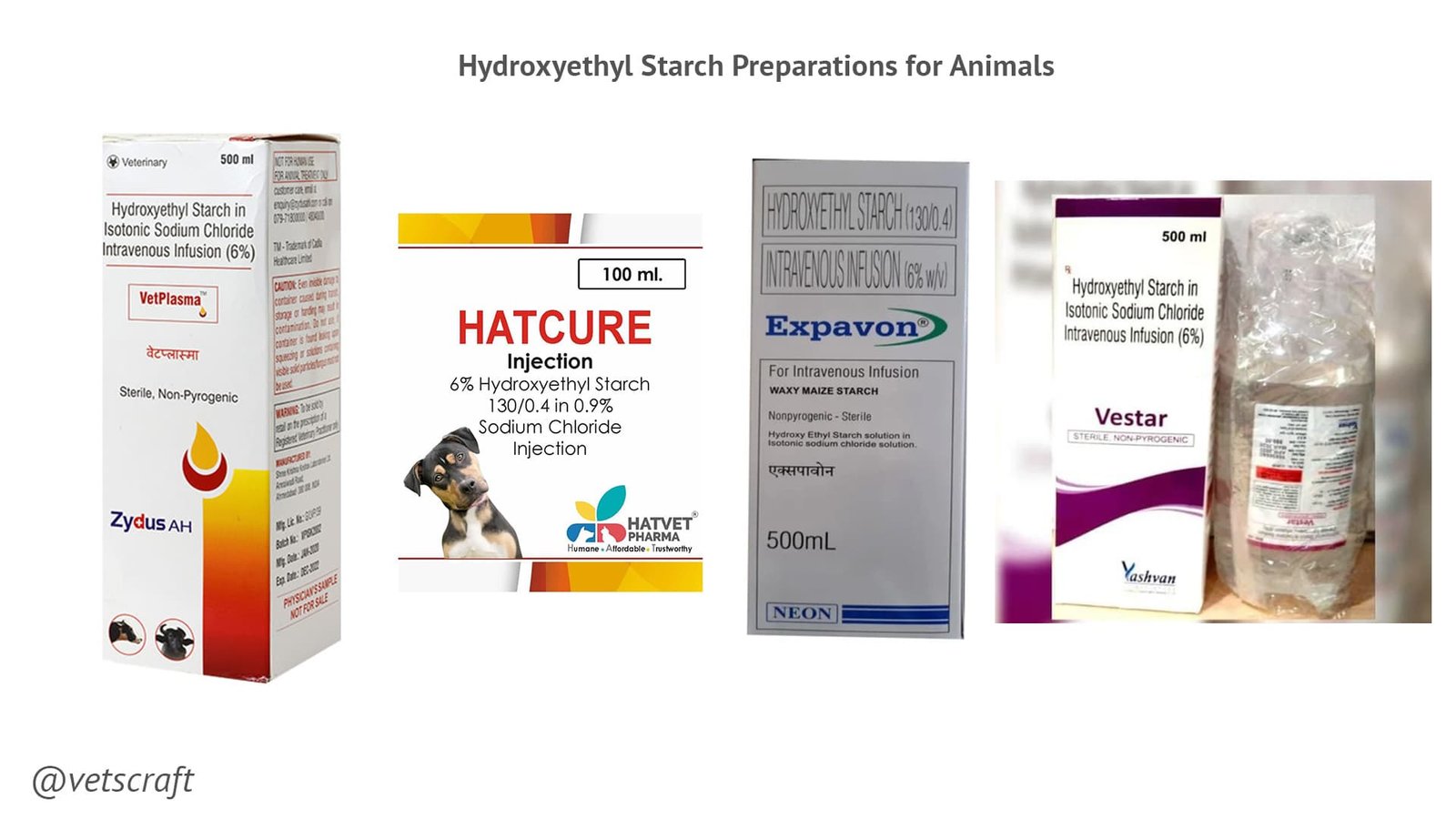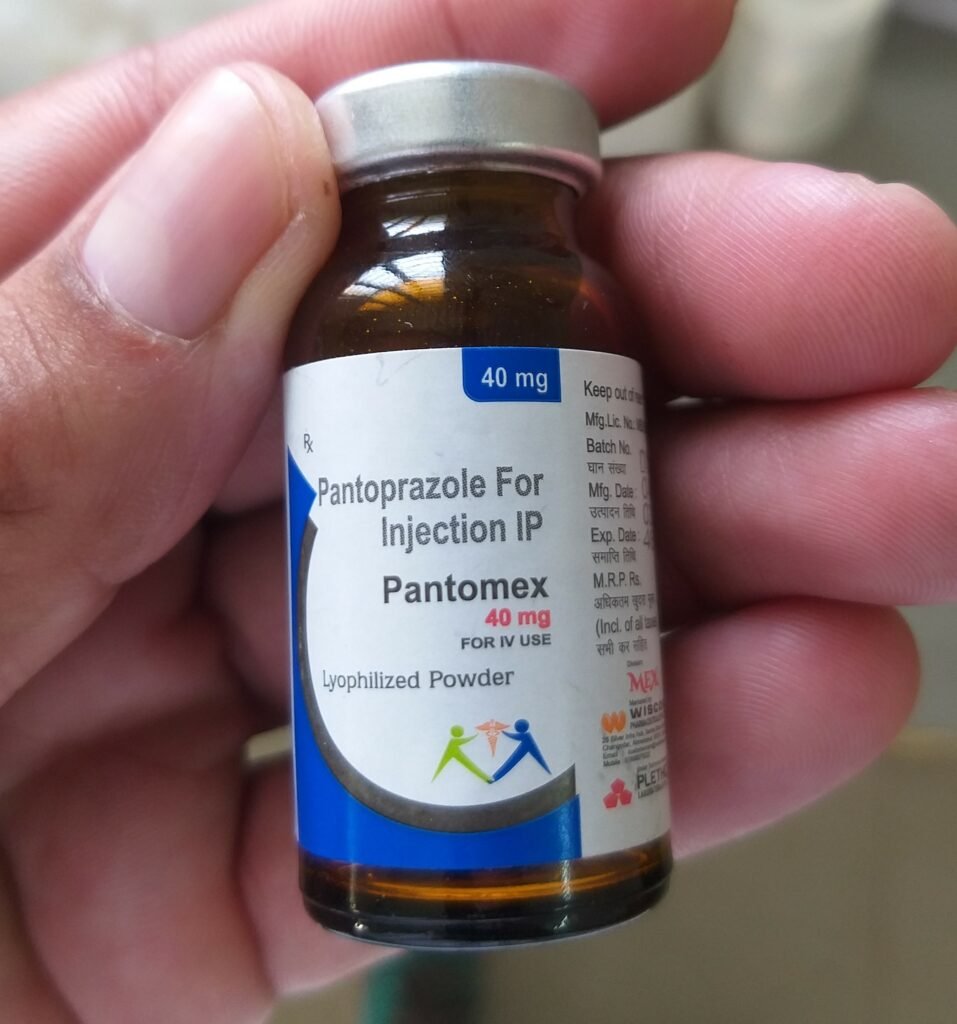TABLE OF CONTENTS
Hydroxyethyl Starch
Hydroxyethyl starch is a synthetic colloid plasma volume expander that is used to maintain circulatory volume in animals.
Group
Hydroxyethyl starch is grouped into plasma volume expanders.
Mechanism of Action
When hydroxyethyl starch is administered IV, it increase oncotic pressure in the vascular compartment, which prevents the migration of fluid to the interstitial compartment.
Dose Rates
Dose rate for hydroxyethyl starch in animals is given below:
- Dogs: 5 to 20 mL/kg body weight IV
- Cats: 5 to 10 mL/kg body weight IV
- Horses: 5 to 10 mL/kg body weight IV
- Pigs: 5 to 20 mL/kg body weight IV
- Sheep and Goats: 5 to 20 mL/kg body weight IV
Indications
Hydroxyethyl starch is indicated for the following conditions-
- Circulatory Shock
- Acute Hypovolemia
Contraindications
Use of hydroxyethyl starch is contraindicated in the following conditions-
- Patient with dehydration
- Active bleeding / Coagulopathies
- Renal impairment
- Sepsis
Interactions
- No drug interaction reported.
Adverse effects
Hydroxyethyl starch may possibly cause some of the following side effects or adverse effects-
- Kidney injury
- Coagulation abnormality
Toxicity
Overdose can lead to overloading of the circulatory system (e.g., pulmonary edema). In this case, the infusion should be stopped immediately and, if necessary, a diuretic (frusemide) should be administered.
Preparations
Hydroxyethyl starch comes in infusion sachets. Some preparations are mentioned below with their availabilities:
- Inj. VetPlasma (250 and 500mL sachet with 6% HES concentration)
- Inj. Hatcure (100mL sachet with 6% HES concentration)
- Inj. Vestar (500mL sachet with 6% HES concentration)
- Inj. Expavon (500mL sachet with 6% HES concentration)

More about Hydroxyethyl Starch for animals
Hetastarch, pentastarch, or hexastarch are classified according to the number of molar substitutions (the number of hydroxyethyl groups substituted per 100 available anhydrous glucose binding sites). The most molar substitutions and longest average circulation times are found in hetastarch. Compounds with higher molecular weights have longer plasma half lives.
| Forms | Concentration | Molecular weight | Molar Substitution |
|---|---|---|---|
| Hetastarch | 6% | 600-670 kDa | 0.7-0.75 |
| Hetastarch | 6% | 480 kDa | 0.7 |
| Hexastarch | 6% | 200 kDa | 0.62 |
| Pentastarch | 6% or 10% | 200 kDa | 0.5 |
| Pentastarch | 6% | 70 kDa | 0.5 |
| Tetrastarch | 6% or 10% | 130 kDa | 0.42 |
The 6% isotonic hydroxyethyl starch formulation is frequently used in small animal clinics.

